Welcome to the exhilarating world of racing drones, a rapidly growing sport that combines high-speed competition with cutting-edge technology. This comprehensive blog post is your ultimate guide to navigating the ins and outs of drone racing, from understanding the basics and choosing the right equipment to mastering the skies and joining the vibrant community of pilots. Whether you’re a complete novice curious about taking your first flight or an experienced racer looking to sharpen your skills, this guide offers valuable insights and tips to fuel your passion for drone racing. Dive into the dynamic world of racing drones and discover the thrill of piloting these incredible machines through tight courses and against the clock. Let’s get started on your journey to becoming a part of this exciting community!
Table of Contents
Introduction to Racing Drones
Racing drones, a fascinating blend of technology and speed, are transforming the skies into thrilling race tracks. Unlike their commercial or recreational counterparts designed for photography and videography, racing drones are built for speed, agility, and the sheer excitement of high-velocity aerial competition. This guide aims to introduce you to the electrifying world of racing drones, providing you with the foundational knowledge to dive into this fast-paced hobby.
What are Racing Drones?
Racing drones are small, quadcopter UAVs (Unmanned Aerial Vehicles) specifically engineered for participating in competitive racing events. These drones are equipped with FPV (First Person View) systems, allowing pilots to steer the drone as if they were seated in the cockpit, providing a real-time video feed from the drone’s onboard camera. The experience is immersive, adrenaline-fueled, and requires quick reflexes and precise control.
The Appeal of Drone Racing
Drone racing is more than just a hobby; it’s a competitive sport where pilots navigate their drones through obstacle courses at high speeds, often in excess of 100 mph. The appeal lies in the combination of technological mastery and piloting skills, with races taking place in various settings—from professional tracks to impromptu courses in fields and forests. The community aspect is strong, with pilots sharing tips, tricks, and camaraderie.
Why Racing Drones?
- Speed and Agility: Racing drones are designed for speed, capable of darting through tight spaces and making sharp turns.
- Customization: Enthusiasts enjoy the ability to build and customize their drones, tweaking everything from motor power to aerodynamics.
- Competitive Spirit: Racing offers the excitement of competition, from local meetups to international championships.
- FPV Flight Experience: The FPV system offers a unique, immersive experience, making pilots feel as though they are flying through the air themselves.
As you embark on this journey into the world of racing drones, remember that it’s a blend of skill, technology, and passion. Whether you’re a tech enthusiast drawn to the gadgets or a competitive spirit looking for your next challenge, racing drones offer an exhilarating new frontier to explore.
History and Evolution of Racing Drones
The history of racing drones is a tale of rapid technological advancement and a growing global community of enthusiasts. From humble beginnings to the high-tech sport we see today, racing drones have evolved at an astonishing pace, driven by innovation and a passionate community. This segment explores the origins and development of racing drones, offering insight into how this thrilling sport came to be.
The Origins
The concept of drone racing can trace its roots back to the early 2000s when the first consumer drones began to hit the market. Initially, these drones were slow, bulky, and primarily used for photography and videography. However, it didn’t take long for hobbyists and tech enthusiasts to start modifying their drones for speed and agility, laying the groundwork for the first racing drones.
The Birth of FPV Racing
The real turning point for drone racing came with the introduction of First Person View (FPV) technology. FPV systems, consisting of a small camera mounted on the drone and a set of goggles worn by the pilot, provided a live video feed directly from the drone’s perspective. This innovation made it possible for pilots to navigate more precisely at higher speeds, turning drone racing into a viable and exciting sport.
Evolution and Technology
As interest in drone racing grew, so did the technology. Early racing drones were often custom-built, with enthusiasts tweaking every aspect of the design for better performance. Over time, manufacturers began producing racing-specific drones, components, and accessories, making the sport more accessible to newcomers.
The Rise of Competitions and Leagues
The first organized drone racing events started appearing in the mid-2010s, with groups of pilots gathering to test their skills. These informal gatherings quickly evolved into structured competitions, and by the late 2010s, several professional drone racing leagues had been established, including the Drone Racing League (DRL), which brought the sport to mainstream audiences through televised events and online streaming.
The Present and Future
Today, racing drones are sleek, fast, and more accessible than ever. Advances in battery technology, motor efficiency, and aerodynamics continue to push the boundaries of what these machines can do. The community around racing drones is thriving, with pilots of all ages and backgrounds coming together to share their passion for the sport.
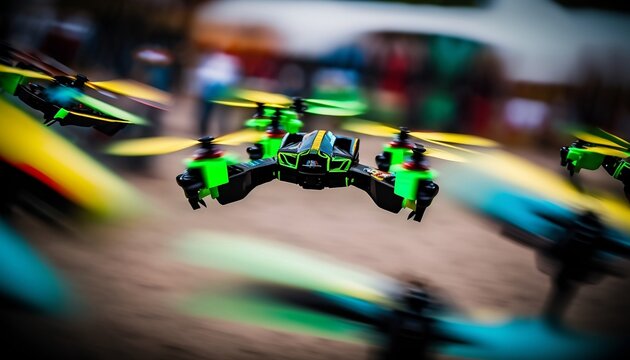
As racing drones continue to evolve, they push not just the limits of technology but also the boundaries of an exciting sport that combines speed, skill, and innovation. The journey from rudimentary quadcopters to the high-speed racing drones of today is a testament to human ingenuity and the universal love of competition.
Types of Racing Drones
In the dynamic world of drone racing, understanding the different types of racing drones is crucial for both newcomers and seasoned pilots. These classifications not only influence the racing experience but also help pilots choose a drone that best fits their skills and racing preferences. Let’s explore the main types of racing drones, highlighting their unique features and what makes each stand out in the competitive arena.
Ready-to-Fly (RTF) Racing Drones
Ready-to-Fly racing drones are the go-to choice for beginners and those looking to dive straight into the action without the hassle of building a drone from scratch. These drones come fully assembled and include all the necessary components, such as the FPV system, making them ideal for pilots eager to start racing with minimal setup.
- Pros: Easy to use, no assembly required, perfect for beginners.
- Cons: Less customizable, may not satisfy experienced pilots looking for specific performance features.
Build-Your-Own (BYO) Racing Drones
For those who prefer a hands-on approach and wish to customize their racing drone, Build-Your-Own kits offer the opportunity to assemble a drone piece by piece. This option appeals to hobbyists and tech enthusiasts who enjoy tweaking and optimizing their drones for peak performance.
- Pros: Highly customizable, potential for better performance, rewarding building experience.
- Cons: Requires technical knowledge, time-consuming assembly.
Micro Racing Drones
Micro racing drones, often referred to as “Tiny Whoops,” are small, agile drones typically flown indoors or in tight spaces. Despite their small size, these drones are capable of high speeds and nimble maneuvers, making them a popular choice for practice and casual racing.
A great choice for beginners is the Tiny Hawk 3
- Pros: Ideal for indoor racing, safe for beginners, affordable.
- Cons: Limited speed and range compared to larger drones.
Mini Racing Drones
Sitting between micro and full-sized drones, mini racing drones offer a balance of speed, agility, and durability. They are versatile, capable of racing both indoors and outdoors, and provide a more immersive FPV experience without the bulkiness of larger models.
- Pros: Versatile, suitable for various racing conditions, robust design.
- Cons: May require more skill to pilot than micro drones.
Standard Racing Drones
Standard racing drones are the most common type used in professional and competitive racing. These drones are optimized for outdoor racing, capable of reaching high speeds, and designed to handle complex courses with challenging obstacles.
- Pros: High performance, suitable for competitive racing, advanced features.
- Cons: More expensive, not recommended for beginners.
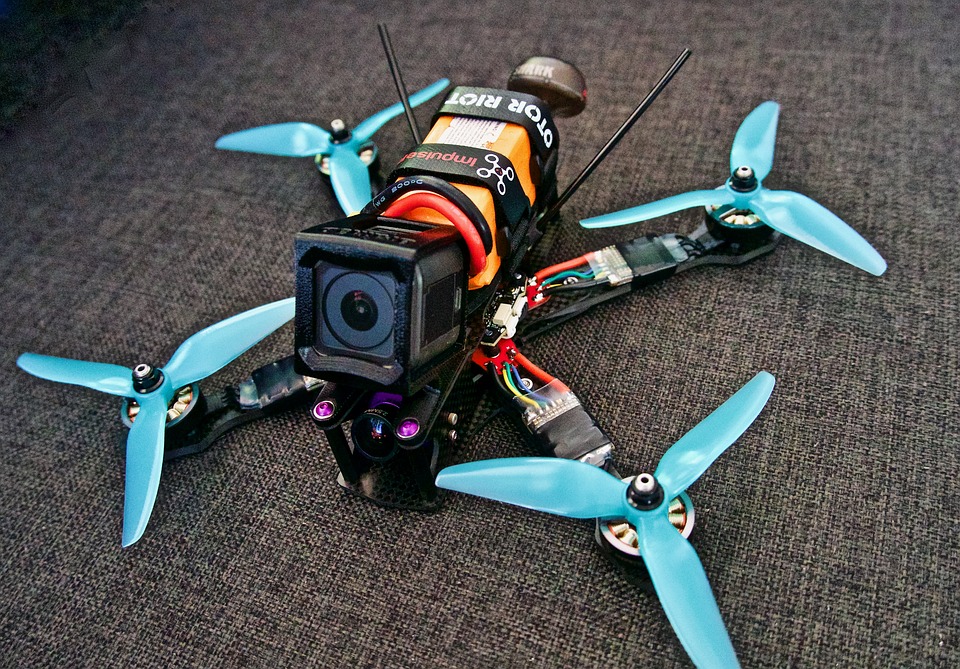
Whether you’re a beginner looking for an easy entry into the world of drone racing or an experienced pilot seeking the thrill of high-speed competition, there’s a type of racing drone to meet your needs. Understanding these categories is the first step in choosing the right drone that will elevate your racing experience.
Performance Capabilities of Racing Drones
When it comes to racing drones, performance is king. The thrill of drone racing comes from the incredible speed, agility, and precision these machines offer. Understanding the performance capabilities of racing drones is essential for pilots looking to compete or simply enjoy the full extent of what drone racing has to offer. This section delves into the key performance metrics that define racing drones, including speed, agility, flight time, and battery life.
Speed
Speed is arguably the most exhilarating aspect of racing drones. These drones can reach speeds of up to 100 mph (160 km/h) or more during races, making for an adrenaline-pumping experience. The speed of a racing drone is influenced by factors such as motor power, propeller size, and overall aerodynamics.
Agility
Agility refers to the drone’s ability to make quick and precise maneuvers. This is crucial in drone racing, where pilots navigate through complex courses with tight turns and obstacles. The agility of a racing drone is determined by its design, including the weight distribution, the responsiveness of its controls, and the efficiency of its propulsion system.
Flight Time and Battery Life
Flight time and battery life are critical factors in racing drones, as they determine how long the drone can remain airborne before needing a recharge or battery swap. Most racing drones have a flight time ranging from 5 to 10 minutes, depending on the racing conditions and the drone’s design. Pilots often carry multiple batteries to swap in between races to keep flying without long interruptions.
Balancing Performance Features
Achieving the perfect balance between speed, agility, and flight time is the holy grail of racing drone design. Manufacturers and pilots alike spend considerable time and resources in testing and modifying drones to optimise these performance capabilities. The ultimate goal is to create a drone that can navigate race courses as quickly and smoothly as possible while staying airborne for the entirety of the race.
Understanding the performance capabilities of racing drones is vital for anyone involved in the sport, whether you’re a builder, a pilot, or simply a fan. The pursuit of faster speeds, greater agility, and longer flight times drives the innovation and excitement in the world of drone racing. By knowing what makes these drones fly, you can better appreciate the skill it takes to pilot them and the engineering marvels they represent.
Key Components of Racing Drones
Racing drones are marvels of engineering, composed of several key components that work in harmony to achieve high-speed flight and maneuverability. Understanding these components is essential for anyone looking to delve into the world of drone racing, whether you’re building your own drone or simply curious about how these machines achieve their incredible performance. Let’s explore the key components of racing drones and their roles in the drone’s operation.
Frame
The frame is the backbone of the racing drone, providing structural support for all other components. Frames are typically made from materials like carbon fiber, known for its lightweight and durability, which are critical for high-speed maneuvers and surviving crashes.

Motors
Motors are what give racing drones their lift and propulsion. Racing drones usually have four motors (in a quadcopter setup), each responsible for spinning a propeller. The power and efficiency of these motors directly influence the drone’s speed and agility.
Propellers
Propellers are crucial for creating lift and thrust. The size, shape, and material of propellers can significantly affect the drone’s flight characteristics, including speed, stability, and efficiency.
Electronic Speed Controllers (ESCs)
ESCs control the speed of the motors, and by extension, the speed and direction of the drone. They are a vital component in managing the delicate balance between power, thrust, and maneuverability required for racing drones.
Flight Controller
The flight controller is the brain of the racing drone, processing input from the pilot and adjusting the motor speeds accordingly to control the drone’s movement. Advanced flight controllers also include features like stabilization algorithms and telemetry data logging.
Battery
The battery is the drone’s power source, with lithium polymer (LiPo) batteries being the most common choice for racing drones due to their high energy density and discharge rates. The capacity and voltage of the battery impact the drone’s flight time and overall performance.
FPV System
The First Person View (FPV) system, consisting of a camera, video transmitter, and goggles, allows pilots to see from the drone’s perspective. This system is what makes drone racing not just possible but thrilling, offering a bird’s-eye view of high-speed races.
Understanding these key components is the first step towards mastering racing drones, whether you’re interested in building, flying, or simply appreciating the technology behind this exciting sport. Each component plays a crucial role in the drone’s performance, and together, they make up the high-speed racing machines that captivate audiences around the world.
Camera and FPV Systems in Racing Drones
The Camera and First Person View (FPV) systems are among the most critical components of racing drones, transforming the flying experience by providing pilots with a drone’s-eye view of the race. This technology not only makes drone racing uniquely immersive but also requires a high level of skill, as pilots must navigate courses at high speeds based solely on this video feed. Let’s delve into the details of camera and FPV systems, understanding their importance in the exhilarating world of racing drones.
The Camera
In drone racing, the camera is the pilot’s eyes. These cameras are designed to be lightweight, compact, and capable of transmitting real-time video to the FPV goggles or monitors. The quality of the camera affects the pilot’s ability to see obstacles and navigate the course, making features like resolution, field of view (FOV), and low-light performance critical.
FPV Goggles
FPV goggles are worn by pilots to receive the video feed from the drone’s camera, providing an immersive view of the flight. These goggles vary in quality, resolution, and features, with higher-end models offering better image quality and additional functionalities like head tracking, which moves the camera angle based on the pilot’s head movements.
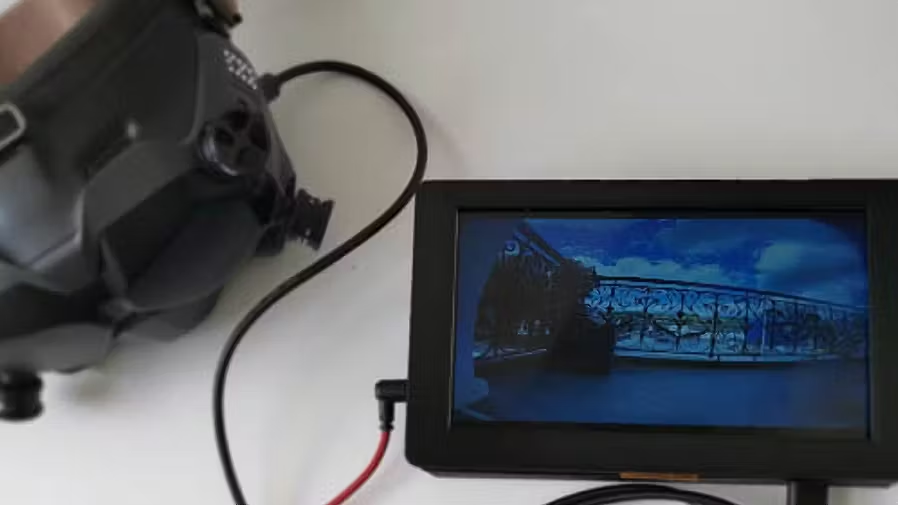
Video Transmitter (VTX)
The video transmitter (VTX) plays a crucial role in the FPV system by sending the camera’s video feed to the pilot’s goggles or monitor. The power output of the VTX affects the range and quality of the video feed, with higher power offering a stronger signal over longer distances but requiring careful management to avoid interference with other racers.
Antennas
Antennas are critical for maintaining a strong and clear video signal from the drone to the FPV goggles. The choice of antenna can greatly affect the range and quality of the FPV feed, with options like omnidirectional and directional antennas catering to different racing scenarios.
Latency
Latency refers to the delay between the camera capturing an image and the image being displayed on the pilot’s goggles. In drone racing, where split-second decisions are crucial, low-latency systems are essential for competitive performance.
The integration of camera and FPV systems has revolutionized drone racing, making it one of the most immersive and technologically advanced sports. By providing pilots with a first-person view of the race, these systems demand a high level of skill and precision, offering an unmatched adrenaline rush. Whether you’re a pilot, builder, or enthusiast, understanding the intricacies of these systems is key to appreciating the full thrill of racing drones.
Customisation and Upgradability of Racing Drones
Customisation and upgradability are at the heart of the racing drone community, allowing pilots to tweak their drones for optimal performance, personal style, and to stand out in the competitive scene. The ability to upgrade and customise racing drones not only enhances the flying experience but also provides an avenue for enthusiasts to continuously improve and adapt their drones to the rapidly evolving technology and racing requirements. This aspect of drone racing fosters a deeply engaged community, where sharing knowledge and innovations is the norm.
Customisation Options
Customisation can range from aesthetic modifications, such as skins and LED lights, to performance upgrades like more powerful motors, improved propellers, and advanced flight controllers. These modifications allow pilots to tailor their drones to specific racing conditions, personal flying styles, or simply to make a visual statement.
Performance Upgrades
Performance upgrades are critical for keeping a competitive edge in races. Pilots often experiment with different motors, propellers, batteries, and electronic speed controllers (ESCs) to find the perfect balance of speed, agility, and flight time. Advanced components such as low-latency FPV systems and lightweight, durable frames can also make a significant difference in a drone’s racing capabilities.
Upgradability
The modular nature of racing drones makes them highly upgradable, allowing pilots to replace or enhance individual components as technology advances or as parts wear out. This upgradability ensures that a racing drone can evolve over time, staying relevant and competitive without the need for purchasing a new drone entirely.
DIY Custom Builds
Many in the drone racing community prefer building their drones from scratch, selecting each component based on desired performance characteristics and budget. DIY custom builds offer the ultimate level of customization, enabling pilots to create uniquely optimized drones that reflect their individual preferences and racing strategies.
The Role of Software
Customisation also extends to software, with many pilots tuning their drone’s flight controller software to adjust flight characteristics, such as responsiveness, stability, and agility. Software tools and simulators further aid pilots in testing and refining their setups in a virtual environment before taking to the skies.
Customisation and upgradability are not just about making a racing drone faster or more agile; they’re about creating a machine that resonates with the pilot’s identity and approach to the sport. Through the continuous process of tweaking and improving their drones, pilots not only enhance their flying experience but also contribute to the innovation and camaraderie that define the drone racing community. Whether you’re a seasoned racer or new to the scene, engaging in customisation and upgrades is a rewarding journey that pushes the boundaries of what racing drones can achieve.
Software and Flight Controllers in Racing Drones
In the high-speed world of drone racing, the software and flight controllers act as the nerve center, orchestrating the drone’s movements with precision and responsiveness. These components are crucial for any racing drone, dictating its stability, agility, and overall performance. Understanding the role of software and flight controllers is essential for pilots aiming to optimize their racing drones for competitive edge or personal satisfaction.
Flight Controllers
The flight controller is a small but powerful circuit board that interprets input from the drone’s sensors, the pilot’s commands, and any programmed instructions to adjust the speed of the motors accordingly. It’s what keeps the drone stable in the air, even at high speeds and during complex manoeuvres.
Software Customisation
Software for racing drones allows for deep customisation of flight characteristics. Pilots can adjust parameters such as PID (Proportional, Integral, Derivative) settings, which control the drone’s response to changes in position or direction, throttle response, and more. This customisation is key to tailoring a drone’s behavior to a pilot’s preferences or the specific demands of a racecourse.
Firmware Updates
Manufacturers regularly release firmware updates for flight controllers, offering improvements in stability, new features, or fixes for known issues. Staying updated is crucial for maintaining optimal performance and ensuring compatibility with new components or software tools.
Choosing a Flight Controller
The choice of a flight controller can greatly affect a racing drone’s performance. Key factors to consider include the number of input/output ports for connecting components, the processor speed, and the compatibility with various software tuning tools. High-quality flight controllers offer better precision, faster processing of pilot inputs, and more reliable performance.
Simulators
FPV simulators are invaluable tools for pilots, allowing them to practice flying, experiment with different settings, and master racing courses without the risk of crashing their physical drones. These simulators often use the same software parameters as actual drones, providing a realistic and practical learning environment.
Software and flight controllers are the heart and brain of racing drones, respectively. They not only enable the incredible manoeuvres and high-speed performance that make drone racing such a thrilling sport but also offer pilots extensive customisation and optimisation options. Whether fine-tuning for personal preference or competitive advantage, understanding and leveraging these components is key to achieving peak drone performance.
Regulations and Safety in Racing Drones
Navigating the world of racing drones involves more than just mastering the controls; it also requires an understanding of the regulations and safety measures that ensure responsible flying. As the popularity of drone racing grows, so does the importance of adhering to these guidelines to protect pilots, spectators, and the public. This section covers the key regulations and safety practices in the racing drone community.
Understanding Drone Regulations
Drone regulations vary by country and are designed to ensure airspace safety and privacy. In many places, racing drones are subject to specific rules that may include registration requirements, flying restrictions in certain areas, and guidelines on how and where drones can be flown.
Registration and Licensing
Many countries require racing drones to be registered and, in some cases, require pilots to have a license or pass a safety test. These measures help authorities keep track of drone activity and ensure that pilots are aware of their responsibilities.

No-Fly Zones and Airspace Classification
No-fly zones, such as airports, military bases, and national parks, are off-limits for drone flights. Pilots must be aware of and respect these restrictions to avoid penalties and ensure safety. Airspace classification also dictates where and how high drones can fly, which is particularly relevant for racing drones that may reach high speeds and altitudes.
Safety Gear and Precautions
Safety gear, including propeller guards, safety nets, and designated flying areas, is essential during races to protect pilots, spectators, and the drones themselves. Additionally, pilots should perform pre-flight checks to ensure their drones are in good condition and to minimize the risk of accidents.
Flying Etiquette and Community Guidelines
Beyond formal regulations, the racing drone community often follows its own set of guidelines for flying etiquette. This includes respecting other pilots’ space, avoiding interference with other drones’ signals, and being mindful of the public and private property.
Adhering to regulations and safety measures is crucial for the sustainability and growth of the drone racing hobby and sport. By staying informed and practicing responsible flying, pilots can ensure that drone racing continues to be an exciting and safe activity for everyone involved. Whether you’re a seasoned racer or new to the scene, understanding and applying these guidelines is essential for a positive drone racing experience.
Training and Skills Development in Racing Drones
Mastering a racing drone involves more than just learning how to take off and land. It’s about developing the skills to navigate complex courses at high speeds, execute precise maneuvers, and compete against other pilots under pressure. Training and skill development are crucial aspects of becoming a proficient drone racer, whether you’re aiming for competitive leagues or enjoying the thrill of flying. Here, we explore effective ways to train and develop the necessary skills for racing drones.
Starting with the Basics
Before diving into the complexities of racing, it’s essential to have a solid grasp of the basics. This includes understanding your drone’s controls, practicing takeoffs and landings, and getting comfortable with basic manoeuvres such as turns, ascents, and descents.
Using Simulators
Drone racing simulators are an invaluable tool for pilots of all levels. They allow you to practice flying in a risk-free environment, try out different racing drones, and simulate racing conditions. Simulators can help build muscle memory, reaction time, and a deeper understanding of flight dynamics without the fear of crashing your drone.
Participating in Workshops and Clubs
Joining a drone racing club or participating in workshops can accelerate your learning curve. These gatherings offer a chance to learn from more experienced pilots, share tips and tricks, and get hands-on experience in a supportive environment. Clubs often organize races that can serve as practice sessions for beginners.
Practice, Practice, Practice
Like any sport, proficiency in drone racing comes with practice. Set aside regular time to fly, starting with simple courses before progressing to more complex layouts with tighter turns, obstacles, and varying elevations. Self-imposed challenges, such as flying through smaller gaps or practicing in different weather conditions, can also enhance your skills.
Learning from Competitions
Competing in races, even if you don’t feel fully prepared, is one of the best ways to improve. Racing against others provides insights into effective strategies and exposes you to a wide range of flying styles and techniques. Observing and debriefing after races can also offer valuable lessons.
Continuous Learning
The world of racing drones is constantly evolving, with new technologies, techniques, and strategies emerging regularly. Staying informed through online forums, tutorials, and the broader drone racing community is essential for continuous improvement and staying competitive.
Training and skill development in racing drones is a journey that combines technology, strategy, and personal growth. By embracing the learning process and leveraging the resources available, pilots can not only improve their flying skills but also deepen their appreciation for this thrilling sport. Whether you’re aiming for the podium or flying for fun, the key to success in drone racing is continuous learning and practice.
Racing Leagues and Competitions in Racing Drones
Racing drones have transcended beyond a hobbyist activity to become a competitive sport with its leagues and competitions worldwide. These organized events range from local meetups to international championships, offering pilots of all skill levels the opportunity to showcase their abilities, learn from others, and be part of a vibrant community. This segment explores the landscape of racing leagues and competitions, highlighting how pilots can get involved and what to expect.
Local and Regional Competitions
Local and regional competitions are the grassroots of drone racing, providing a platform for pilots to test their skills, meet fellow enthusiasts, and gain experience in a competitive setting. These events are often organised by drone clubs or local groups and serve as a stepping stone to larger competitions.
National Championships
As pilots progress and seek greater challenges, national championships offer a higher level of competition. These events typically require qualification through regional competitions and attract the top pilots from across the country. National championships are not only about winning but also about earning recognition and potentially securing sponsorships.
International Leagues and Competitions
At the pinnacle of drone racing are the international leagues and competitions, such as the Drone Racing League (DRL) and the FAI Drone Racing World Cup. These events feature the world’s best pilots competing in high-stakes races at iconic locations. Participating in or even attending these events can be a thrilling experience, offering a glimpse into the professional side of drone racing.
Getting Involved
For those interested in participating in racing leagues and competitions, the first step is often joining a local drone racing club or online community. These groups can provide information on upcoming events, tips for preparation, and opportunities for practice sessions with experienced pilots.
The Role of Sponsorships
As pilots gain experience and recognition, opportunities for sponsorships may arise. Sponsors can provide financial support, equipment, and exposure, helping pilots to compete at higher levels and focus on honing their skills. Building a presence in the community, through competition results and social media, can attract potential sponsors.
Racing leagues and competitions are the heart of the drone racing community, bringing pilots together to share their passion, challenge themselves, and push the boundaries of what’s possible with racing drones. Whether you’re just starting out or aiming to compete on the world stage, there’s a place for every pilot in the competitive landscape of drone racing. Engaging with this community not only improves your skills but also contributes to the growth and excitement of the sport.
Costs and Budgeting for Racing Drones
Embarking on the journey of racing drones is an exhilarating prospect, but it’s important to approach it with a clear understanding of the costs involved. From initial investments to ongoing expenses, budgeting for racing drones ensures you can sustain your passion without breaking the bank. This guide provides an overview of the costs associated with racing drones, offering insights into budgeting effectively for both newcomers and seasoned pilots.
Initial Costs
The initial cost of getting into drone racing can vary widely based on whether you opt for a Ready-to-Fly (RTF) model, a Build-Your-Own (BYO) kit, or a high-end competitive racing drone.
- Ready-to-Fly (RTF) Drones: These are ideal for beginners, with prices typically ranging from $200 to $500. They include everything needed to start flying right out of the box. DJI Avata
- Build-Your-Own (BYO) Kits: For those who prefer a custom build, the cost can range from $300 to $1,000+, depending on the quality of components chosen.
- High-End Racing Drones: For competitive racing, investing in a high-end drone can cost anywhere from $1,000 to $2,000 or more, factoring in top-tier components and customization.
Recurring Costs
Maintaining a racing drone involves recurring expenses that can add up over time. These include replacement parts, upgrades, batteries, and entry fees for competitions.
- Replacement Parts: Crashes and wear and tear are inevitable, making replacement parts like propellers, motors, and frames a regular expense. Budgeting $50 to $100 monthly for parts is a good starting point.
- Batteries and Charging Equipment: To keep flying without long breaks, you’ll need multiple batteries and good charging equipment, which can cost $20 to $40 per battery and $50 to $200 for a quality charger.
- Competition Entry Fees: If you plan to compete, entry fees for local races might range from $20 to $50, while larger competitions could be $100 or more.
Budgeting Tips
- Start Small: Begin with a more affordable drone to learn the basics and understand your commitment level before investing in high-end equipment.
- Prioritize Upgrades: Focus on upgrades that significantly impact performance or durability, rather than cosmetic enhancements.
- Buy in Bulk: Purchasing replacement parts like propellers in bulk can save money in the long run.
- Set Aside a Maintenance Fund: Regularly setting aside a small amount for repairs and upgrades can help avoid large, unexpected expenses.
Budgeting for racing drones is about balancing your passion with financial responsibility. By understanding the costs involved and planning accordingly, you can enjoy the thrill of drone racing without undue financial stress. Whether you’re flying for fun or competing at the highest levels, a thoughtful approach to budgeting will ensure that your racing drone hobby remains both enjoyable and sustainable.
Community and Resources for Racing Drones
The racing drone community is a vibrant and supportive network, offering an abundance of resources for pilots of all skill levels. From beginners seeking advice on their first drone to seasoned racers looking for advanced techniques, the community is a valuable source of knowledge, inspiration, and camaraderie. This section explores the various facets of the racing drone community and highlights the resources available to help pilots thrive in this exciting hobby.
Online Forums and Social Media
Online forums and social media groups are the lifeblood of the racing drone community, providing platforms where enthusiasts can share experiences, ask questions, and connect with fellow pilots worldwide. Popular forums like RCGroups and FPVLab, along with Facebook groups and Reddit communities dedicated to drone racing, are excellent starting points.
YouTube and Video Tutorials
YouTube is an invaluable resource for racing drone pilots, offering tutorials that cover everything from basic flight techniques to advanced drone building and racing strategies. Many experienced pilots and manufacturers have channels dedicated to drone racing, providing insights and tips through engaging video content.
Clubs and Meetups
Joining a local drone racing club or attending meetups is an excellent way to immerse yourself in the community. These gatherings allow pilots to fly together, share tips in person, and even participate in local races. Clubs often have seasoned members who are eager to help newcomers get started.
Workshops and Educational Programs
Workshops and educational programs offer structured learning opportunities for racing drone pilots. These events, often hosted by clubs, schools, or drone retailers, provide hands-on training on flying techniques, drone maintenance, and racing strategies.

Racing Leagues and Competitions
Participating in racing leagues and competitions not only allows pilots to test their skills but also serves as a convergence point for the community. These events are great for networking, learning from the best in the field, and staying up-to-date with the latest trends and technologies in drone racing.
Blogs and Online Publications
Blogs and online publications focused on drone racing are excellent resources for news, reviews, and in-depth articles on the latest developments in the sport. These platforms offer a mix of technical information, pilot interviews, and event coverage, keeping the community informed and engaged.
The racing drone community is a testament to the sport’s collaborative spirit, with pilots and enthusiasts coming together to share knowledge, experience, and a passion for drone racing. By engaging with these resources and contributing to the community, pilots can enhance their skills, stay informed, and enjoy the camaraderie that makes drone racing such a rewarding hobby. Whether online or in person, the community offers support and inspiration for everyone from hobbyists to competitive racers.
Conclusion: Getting Started with Racing Drones
Embarking on the journey of racing drones is an exciting venture that combines the thrill of high-speed competition with the joy of flight. Whether you’re drawn to the technical challenge, the competitive spirit, or the community camaraderie, drone racing offers something for everyone. As we wrap up this comprehensive guide, let’s revisit the key points to consider as you take the first steps into the world of racing drones.
Embrace the Learning Curve
Racing drones are sophisticated machines, and mastering them requires patience and practice. Start by familiarising yourself with the basics of drone flight and gradually progress to more advanced techniques. Remember, every expert was once a beginner.
Invest in the Right Equipment
Choosing the right drone is crucial for a rewarding racing experience. Consider starting with an RTF model if you’re new to the hobby. As you gain experience, you can explore building your own drone or upgrading to a high-performance model designed for competitive racing.
Connect with the Community
The racing drone community is a valuable resource for learning, support, and friendship. Engage with online forums, join local clubs, and participate in events to meet fellow pilots. The community is your best ally in navigating the challenges and celebrating the successes of drone racing.
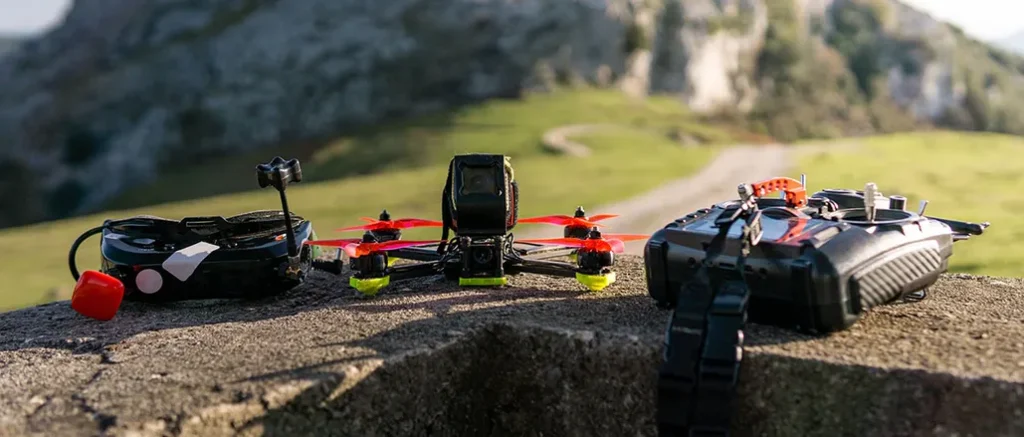
Stay Informed and Compliant
Understanding the regulations and safety guidelines governing drone racing is essential. Ensure you’re familiar with local laws, register your drone if required, and always fly responsibly. Safety is paramount, both for pilots and spectators.
Practice and Compete
Practice is the key to improvement. Use simulators, participate in practice sessions, and challenge yourself with new manoeuvres. When you’re ready, entering competitions can be a thrilling way to test your skills, learn from others, and experience the adrenaline of racing.
Getting started with racing drones opens up a world of technological exploration, skill development, and community engagement. It’s a journey that’s as rewarding as it is challenging, filled with moments of triumph, learning, and camaraderie. Whether your goal is to compete at the highest levels or simply to enjoy the thrill of flying, racing drones offer a unique and exhilarating hobby that’s constantly evolving. Embrace the adventure, and welcome to the thrilling world of drone racing.

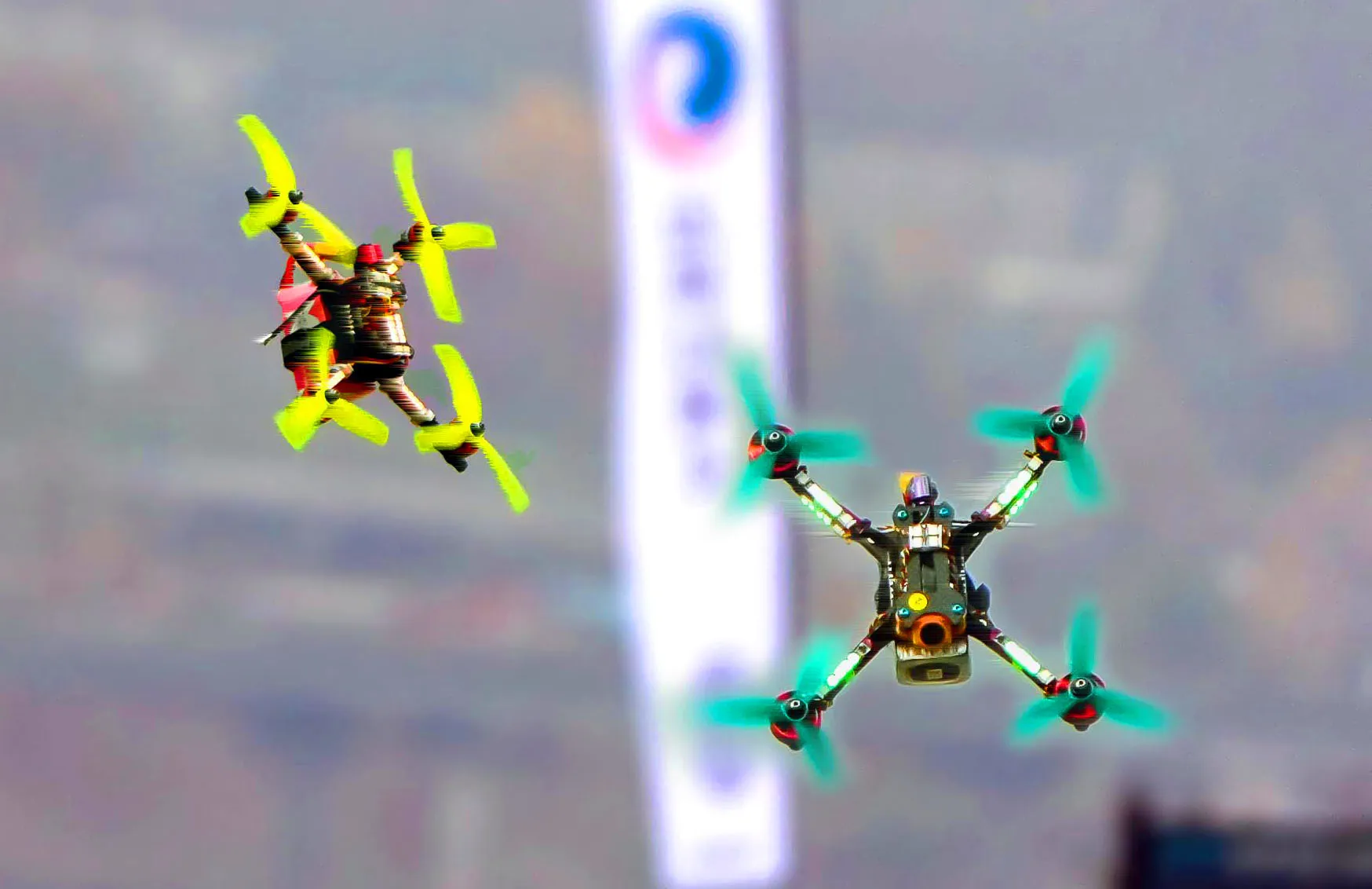



Pingback: Drone Can Follow You: The Ultimate Guide to Top Autonomous Drones in 2024 - Drone Gigs
Pingback: FPV Racing Agility Training: Best Safety Gear Tips & Techniques - FPV Drone Racing Safety Gear